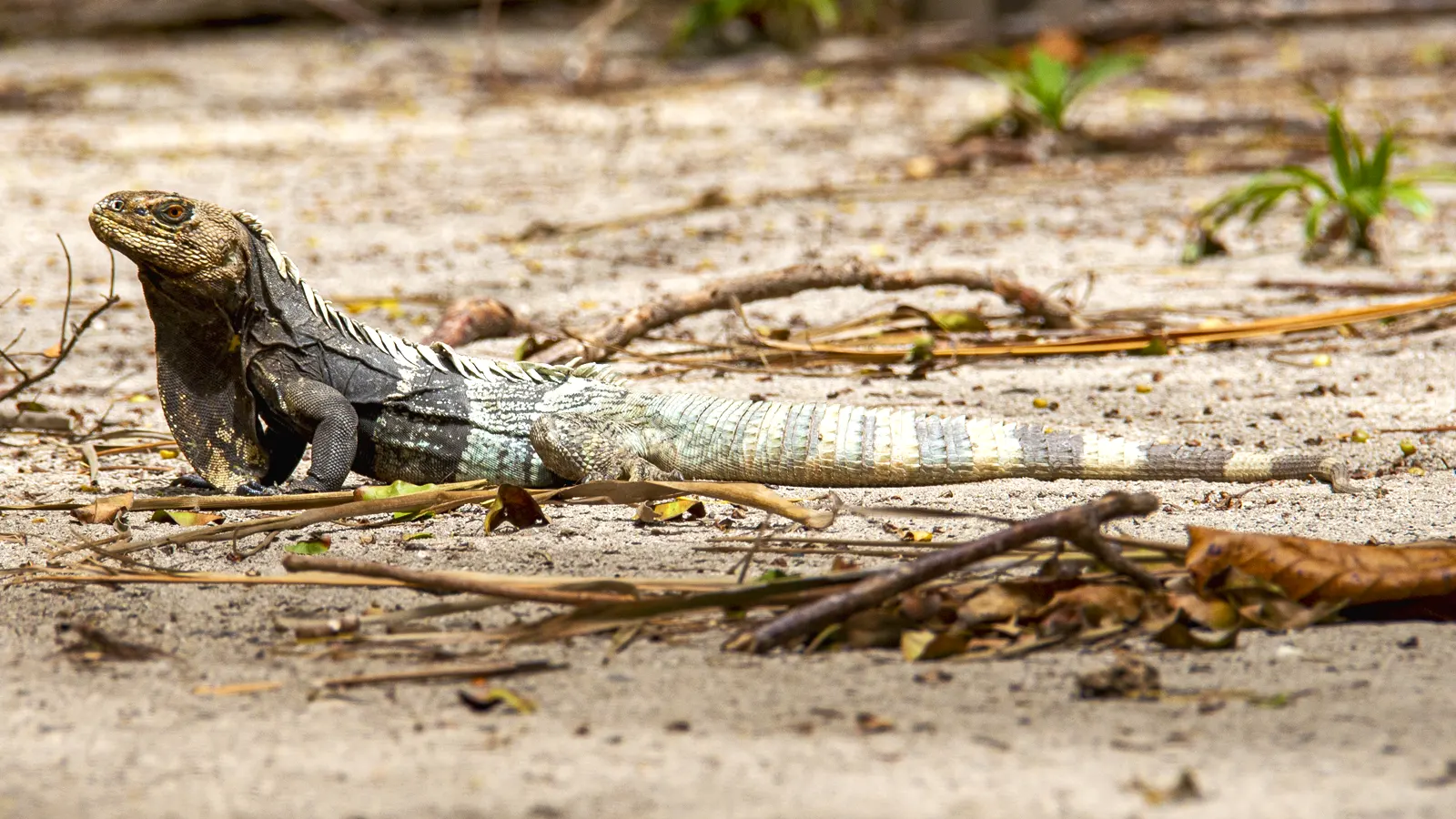Black-Chested Spiny-Tailed Iguana – Ctenosaura melanosterna

The Ctenosaura melanosterna is one of the endemic species of Honduras and is known as Jamo Negro or Black-Chested Spiny-Tailed Iguana or Honduran spiny-tailed iguana.
The Jamo Negro is a resident of the subtropical or tropical dry forests of Honduras.

Natural habitat
This species of iguana is found in two geographic areas of Honduras – Cayos Cochinos and Valle del Aguán – where it fights against predation due to poaching and the consumption of its eggs.
In Cayos Cochinos, a space made up of two islands (one of 143 meters and another of 14 meters of surface) and about 13 small keys, receives protection and monitoring from the Cayos Cochinos Marine Institute on the Caribbean coast north of the department of Atlántida.
On the mainland or in the interior of the country, the species finds its habitat in the valley of the Aguán River in the department of Olancho.
Morphology
Males average 9.5 inches in length and 1.3 lbs. in Cayos Cochinos, maximum up to 12.5 inches in length and 3.1 lbs.
In the Aguán River Valley males are 2 inches shorter and weigh half as much.
taxonomy
Higher taxa: Iguanidae, Iguania, Sauria, Squamata (lizards)
Common Names: Jamo Negro, Black-breasted Spiny-tailed Iguana
Reproduction: Oviparous
Etymology: The specific name melanosterna is derived from the Greek melanos (black) and sternon (chest), and refers to «the black chest and forelegs possessed by members of this species» (Buckley and Axtell, 1997: 139).
Synonymous
- Ctenosaura melanosterna BUCKLEY & AXTELL 1997
- Ctenosaura melanosterna — KÖHLER 2000: 75
- Ctenosaura (Loganiosaura) melanosterna — KÖHLER et al. 2000
- Ctenosaura melanosterna — KÖHLER 2008: 140
- Ctenosaura melanosterna — MCCRANIE 2018
State of conservation
Being an endangered species, it is protected by the laws of the country from exploitation, poaching and the international pet trade.
The Ctenosaura melanosterna is endangered primarily from human activities, as humans poach these iguanas and their eggs for consumption, in addition to the introduction of invasive species and the international pet trade.
The Aguán River Valley, being a very productive area, affects the natural habitat of the Ctenosaura melanosterna, due to the crops and poaching of the inhabitants of the area.
In Olanchito, Valle de Aguán, there is a festival in which the consumption of these iguanas is celebrated as part of the culture of the inhabitants of the area.
In Cayos Cochinos, the iguanas receive some protection from the Islas de la Bahía Marine Park. In the interior of the country, they are found in the south of a protected area, in the Pico Bonito National Park, although protection is limited in this region.
On the IUCN red list
The black-breasted spiny-tailed iguana subpopulation Ctenosaura melanosterna Cayos Cochinos has most recently been assessed for the IUCN Red List of Threatened Species in 2012. The Ctenosaura melanosterna Cayos Cochinos subpopulation is listed as Critically Endangered under criteria B1ab(iii ,v)+2ab(iii,v).
Sources
- Ctenosaura melanosterna BUCKLEY & AXTELL, 1997 ( https://reptile-database.reptarium.cz/species?genus=Ctenosaura&species=melanosterna )
- Black-chested Spiny-tailed Iguana ( https://www.iguanafoundation.org/what-we-support/spiny-tailed-iguanas/black-chested-spiny-tailed-iguana/ )
- Animalia ( https://animalia.bio/ctenosaura-melanosterna )
- Black-chested Spiny-tailed Iguana ( https://www.iucnredlist.org/species/194988/14856742 )



